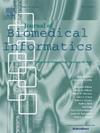Cross-domain visual prompting with spatial proximity knowledge distillation for histological image classification
IF 4
2区 医学
Q2 COMPUTER SCIENCE, INTERDISCIPLINARY APPLICATIONS
引用次数: 0
Abstract
Objective:
Histological classification is a challenging task due to the diverse appearances, unpredictable variations, and blurry edges of histological tissues. Recently, many approaches based on large networks have achieved satisfactory performance. However, most of these methods rely heavily on substantial computational resources and large high-quality datasets, limiting their practical application. Knowledge Distillation (KD) offers a promising solution by enabling smaller networks to achieve performance comparable to that of larger networks. Nonetheless, KD is hindered by the problem of high-dimensional characteristics, which makes it difficult to capture tiny scattered features and often leads to the loss of edge feature relationships.
Methods:
A novel cross-domain visual prompting distillation approach is proposed, compelling the teacher network to facilitate the extraction of significant high-dimensional features into low-dimensional feature maps, thereby aiding the student network in achieving superior performance. Additionally, a dynamic learnable temperature module based on novel vector-based spatial proximity is introduced to further encourage the student to imitate the teacher.
Results:
Experiments conducted on widely accepted histological datasets, NCT-CRC-HE-100K and LC25000, demonstrate the effectiveness of the proposed method and validate its robustness on the popular dermoscopic dataset ISIC-2019. Compared to state-of-the-art knowledge distillation methods, the proposed method achieves better performance and greater robustness with optimal domain adaptation.
Conclusion:
A novel distillation architecture, termed VPSP, tailored for histological classification, is proposed. This architecture achieves superior performance with optimal domain adaptation, enhancing the clinical application of histological classification. The source code will be released at https://github.com/xiaohongji/VPSP.

利用空间邻近性知识提炼跨域视觉提示,实现组织学图像分类。
目的:组织学分类是一项具有挑战性的任务,因为组织学组织的外观多种多样,变化难以预测,而且边缘模糊。最近,许多基于大型网络的方法取得了令人满意的效果。然而,这些方法大多严重依赖于大量的计算资源和大型高质量数据集,限制了它们的实际应用。知识蒸馏(Knowledge Distillation,KD)提供了一种很有前景的解决方案,它能使较小的网络达到与较大网络相当的性能。然而,知识蒸馏受到高维特征问题的阻碍,难以捕捉到微小分散的特征,并经常导致边缘特征关系的丢失:方法:提出了一种新颖的跨领域视觉提示提炼方法,迫使教师网络将重要的高维特征提取到低维特征图中,从而帮助学生网络取得优异成绩。此外,还引入了基于新型向量空间接近性的动态可学习温度模块,以进一步鼓励学生模仿教师:在广泛接受的组织学数据集 NCT-CRC-HE-100K 和 LC25000 上进行的实验证明了所提方法的有效性,并在流行的皮肤镜数据集 ISIC-2019 上验证了其鲁棒性。与最先进的知识蒸馏方法相比,所提出的方法通过优化领域适应性实现了更好的性能和更高的鲁棒性:本文提出了一种专为组织学分类定制的新型蒸馏架构,称为 VPSP。结论:本文提出了一种专为组织学分类设计的新型蒸馏架构--VPSP,该架构通过优化领域适应性实现了更优越的性能,从而提高了组织学分类的临床应用水平。
本文章由计算机程序翻译,如有差异,请以英文原文为准。
求助全文
约1分钟内获得全文
求助全文
来源期刊

Journal of Biomedical Informatics
医学-计算机:跨学科应用
CiteScore
8.90
自引率
6.70%
发文量
243
审稿时长
32 days
期刊介绍:
The Journal of Biomedical Informatics reflects a commitment to high-quality original research papers, reviews, and commentaries in the area of biomedical informatics methodology. Although we publish articles motivated by applications in the biomedical sciences (for example, clinical medicine, health care, population health, and translational bioinformatics), the journal emphasizes reports of new methodologies and techniques that have general applicability and that form the basis for the evolving science of biomedical informatics. Articles on medical devices; evaluations of implemented systems (including clinical trials of information technologies); or papers that provide insight into a biological process, a specific disease, or treatment options would generally be more suitable for publication in other venues. Papers on applications of signal processing and image analysis are often more suitable for biomedical engineering journals or other informatics journals, although we do publish papers that emphasize the information management and knowledge representation/modeling issues that arise in the storage and use of biological signals and images. System descriptions are welcome if they illustrate and substantiate the underlying methodology that is the principal focus of the report and an effort is made to address the generalizability and/or range of application of that methodology. Note also that, given the international nature of JBI, papers that deal with specific languages other than English, or with country-specific health systems or approaches, are acceptable for JBI only if they offer generalizable lessons that are relevant to the broad JBI readership, regardless of their country, language, culture, or health system.
 求助内容:
求助内容: 应助结果提醒方式:
应助结果提醒方式:


